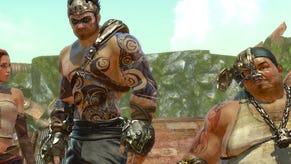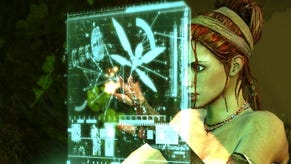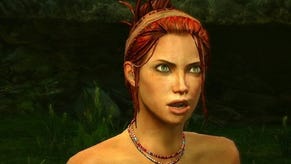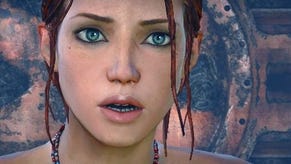Enslaved: Odyssey to the West
Serkis kills.
Time was that Monkey was my hero. Born from an egg, on a mountain top, the funkiest monkey who ever popped.
Mostly it was because his weapon was essentially a stick, and I had access to sticks aplenty - but as a child the story of a rebellious character who denied authority at every opportunity spoke to me. He was mischievous, bold and impulsive - everything a 12 year-old gets told not to be most of the time.
Until some years later, I had no idea that the series was based on a sixteenth century Chinese literary classic, itself based on a historical truth. Playing Enslaved for the first time, you'd be forgiven for not seeing the connection either.
Enslaved's Monkey is hunched, gruff and grumpy, built more like a gorilla than a lithe tree-climber. Ninja Theory's take on Tripitaka the monk cements the studio's penchant for saucer-eyed redheads hinted at by Heavenly Sword. Technology replaces magic, slavery usurps the whim of the Gods. Much as with the TV series, however, there's a tremendous sense of adventure, wonder and magic here.
It's incredibly pretty - this is not what we've come to expect from post-apocalyptic scenarios. Taking inspiration from documentary series Life After People, Enslaved's New York is a verdant jungle of tangled vines and rippling meadows. Bright, posterbook colours saturate the screen, swaddling the carcasses of toppling skyscrapers in blankets of reds and greens. Yellow highlights pick out points of climbing interest, and the bluest of blue skies would have Chicken Little wishing they would fall just so he could bathe in them.
Providing contrast are the rusting remnants of humanity's last days. Shattered vehicles and broken masonry provide ducking points for the automatic cover system, whilst the tarnished, sharp-edged automatons prowling the wasteland give you reason to seek them out. Propaganda and political slogans proclaim hope for the end of a war which only came with the lack of anyone to fight it.
At the close of a civilisation personified by conflict and dominion, it's nature which has won the final battle. The landscape is littered with brick walls which shatter under machine gun fire, treacherously fragile ledges and bright blue recycling bins, which seem to have persevered against the ravages of time more tenaciously than almost anything else.
There's a wonderfully refreshing sense of openness - not perhaps in the relatively linear level design, but in the sprawling vistas and distant horizons. In the couple of hours I spent in its company, Enslaved didn't once try to contain me in a single enclosed structure, always allowing that sapphire sky to alleviate any need for the use of the word corridor. Crossing the Hudson river allows the game to give the grand perspective on the world's shattered capital, trees sprouting victoriously from the jagged teeth of the city skyline.
The spectacle of the macro hasn't been to any detriment of the details, though. The services of rubber-faced Andy Serkis have been employed in what we're assured is a 'full-performance' in the role of Monkey: motion capture, facial animation and voice acting. He, and Ninja Theory, have done a tremendous job, conveying more than enough emotion through the raise of a bestial brow and subtle vocal inflection to make up for his less than loquacious dialogue - adeptly penned by Alex Garland. In some scenes it touches on the uncanny valley, communicating so effectively with sub-conscious body language that I'm a little taken aback.














